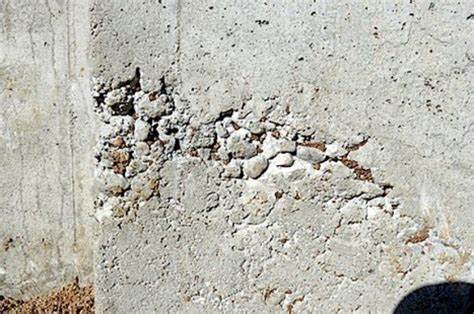How To Prevent Honeycomb In Concrete Wall In Escondido?
 Concrete is a versatile and durable building material widely used in construction projects worldwide. However, despite its strength, concrete walls are susceptible to certain defects, one of which is honeycombing. Honeycombs are voids or gaps left in concrete due to poor consolidation, improper vibration, or inadequate mix design. These voids not only compromise the structural integrity of the wall but also affect its aesthetic appeal. To avoid honeycombing and ensure the quality of your concrete walls, here are five essential tips to follow:
Concrete is a versatile and durable building material widely used in construction projects worldwide. However, despite its strength, concrete walls are susceptible to certain defects, one of which is honeycombing. Honeycombs are voids or gaps left in concrete due to poor consolidation, improper vibration, or inadequate mix design. These voids not only compromise the structural integrity of the wall but also affect its aesthetic appeal. To avoid honeycombing and ensure the quality of your concrete walls, here are five essential tips to follow:
- The foundation of a strong and durable concrete wall lies in its mix design. It’s crucial to use the correct proportions of cement, aggregates, water, and additives to achieve the desired strength and workability. Consult with a qualified engineer or technician to determine the appropriate mix design based on the specific requirements of your project. Using high-quality materials and adhering to the recommended mix ratios will help minimize the risk of honeycombing.
- Proper consolidation is essential to eliminate air voids and ensure that the concrete fills all spaces within the formwork. Inadequate vibration during the pouring process can lead to poor compaction, resulting in honeycombing. Employ efficient vibration techniques, such as internal or external vibrators, to remove entrapped air and excess water from the concrete mixture. Pay close attention to corners, edges, and congested areas where air pockets are more likely to form.
- The manner in which concrete is placed and compacted significantly influences its quality and durability. Avoid free fall of concrete from excessive heights, as it can cause segregation and increase the likelihood of honeycombing. Instead, use chutes, tremies, or pumps to deliver concrete smoothly to the desired location. Employ proper compaction equipment and techniques to ensure that the concrete is uniformly distributed and thoroughly compacted throughout the formwork.
- The formwork serves as the mold for shaping concrete walls and must be properly installed to prevent leakage and ensure uniformity. Inspect the formwork thoroughly before pouring concrete to ensure that it is structurally sound and adequately braced to withstand the pressure of the wet concrete. Seal any gaps or joints in the formwork to prevent leakage of cement paste and loss of fines, which can contribute to honeycombing.
- Curing is the process of maintaining adequate moisture and temperature conditions to promote hydration and strength development in concrete. Proper curing is essential for reducing the risk of surface defects, including honeycombing. Implement a suitable curing method, such as water curing, membrane curing, or curing compounds, immediately after finishing the concrete surface. Protect the freshly poured walls from harsh weather conditions, excessive sunlight, and rapid moisture loss to ensure optimal curing and minimize the risk of honeycombing.
FAQs
What Causes Honeycombing In Concrete Walls?
Honeycombing in concrete walls is typically caused by poor consolidation, inadequate vibration, improper mix design, and improper placement and compaction techniques.
Can Honeycombing Be Repaired?
Minor honeycombing can be repaired using grouts or repair mortars, but extensive honeycombing may require more significant structural repairs, which can be costly and time-consuming.
How Can I Identify Honeycombing In Concrete Walls?
Honeycombing is characterized by voids or gaps in the concrete surface, often visible upon inspection. It may also be accompanied by surface irregularities, such as rough textures or exposed aggregates.
Conclusion
Preventing honeycomb in concrete walls requires careful planning, attention to detail, and adherence to best practices throughout the construction process. By following the tips outlined above, you can minimize the risk of honeycombing and ensure the structural integrity and aesthetic quality of your concrete walls. Remember to consult with qualified professionals and employ appropriate techniques and materials to achieve optimal results. For more information, contact Concrete Contractor Escondido at (760) 993-3343.